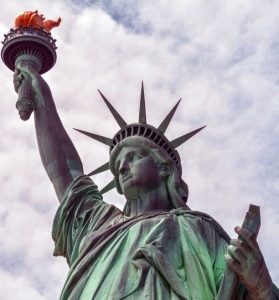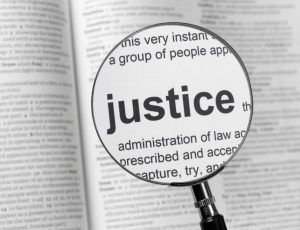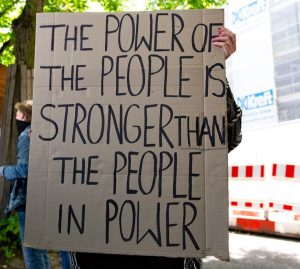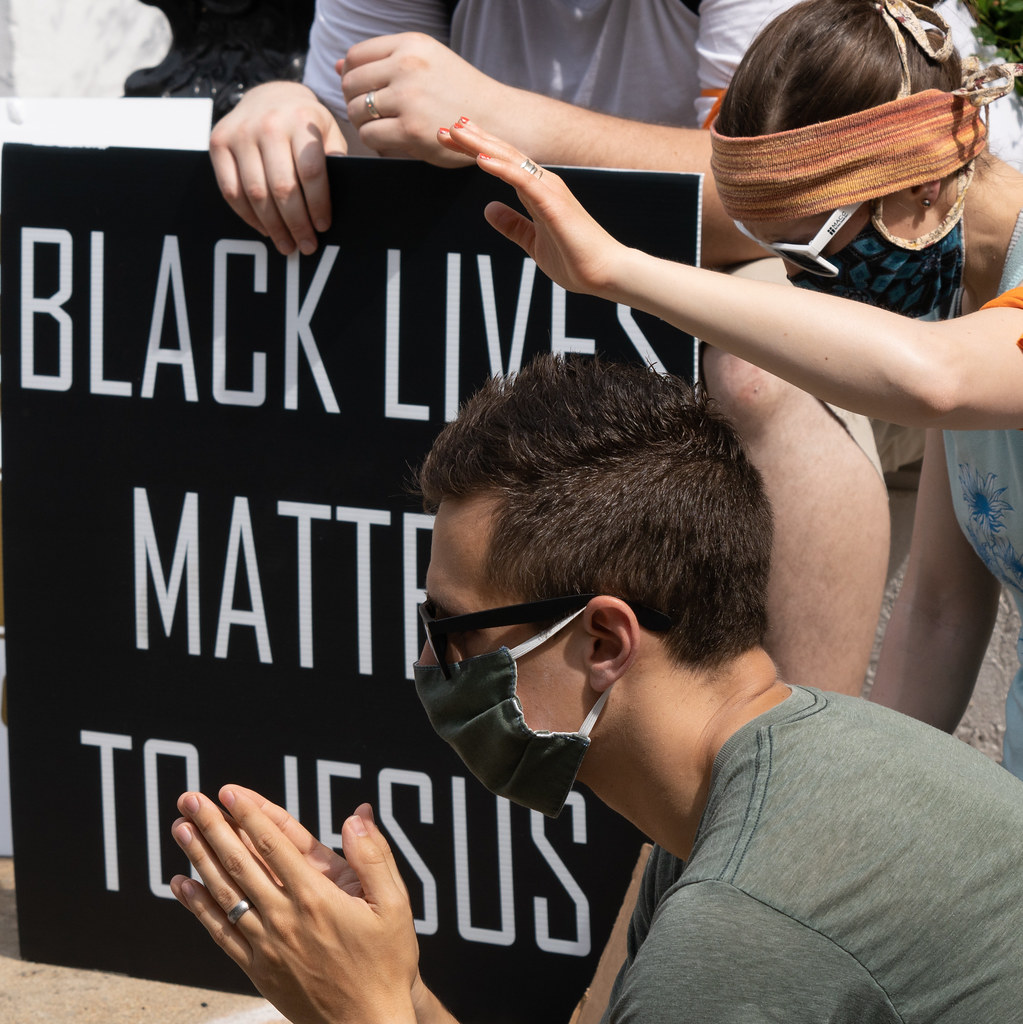Homeless at the Piano
Andy Pope, a musical prodigy with amazing creativity and passion for the performing arts has been a performer and composer since he was a child. A costly medical misdiagnosis led to a health crisis resulting in a decade of homelessness. He shares an account of his undeterred pursuit of that passion that created Eden in Babylon currently under development at the Regional Theater of the Palouse slated for production in summer 2023.
 When I was homeless, I would wake up on a couple of pieces of cardboard, sometimes set over dirt. Sometimes I slept on a ramp on the side of a Catholic church. I would wake when the sky was getting light, then wander into a nearby AA fellowship. There I would hit the bathroom for a quick clean-up before grabbing a cup of coffee.
When I was homeless, I would wake up on a couple of pieces of cardboard, sometimes set over dirt. Sometimes I slept on a ramp on the side of a Catholic church. I would wake when the sky was getting light, then wander into a nearby AA fellowship. There I would hit the bathroom for a quick clean-up before grabbing a cup of coffee.
Make that three cups. The coffeemaker there was a homeless lady with 30+ years of sobriety in Alcoholics Anonymous. I remember her commenting how I would sit at the meeting and appear to be calmer and calmer, the more coffee I drank.
There was a none-too-pretty picture of the self-serving homeless person, who would come into the Berkeley Fellowship, grab a cup of coffee intended for an AA member, and then leave the premises. I did not want to conform to that picture.
So I sat for an hour, listened and occasionally spoke. I heard many wise sayings in that room, from people who had effectively found recovery from alcoholism and drug abuse. Inwardly, however, I knew I was mostly in it for the coffee.
There were also a few other ways for me to find a morning cup of coffee. Sometimes I would sleep in an illegal spot on campus near a Starbucks. I’d have saved a buck and change from the previous night, and then I would get to sit in the Starbucks with a newspaper—almost looking like a “normal” person.
The Men’s Shelter had excellent Peet’s coffee along with oatmeal, eggs, bread, peanut butter and all kinds of morning goodies. This was also an option. But my favorite coffee was the Kirkland Columbian they served at the North Berkeley Senior Center.
And it was only 40 cents.
Some mornings, I would get myself to the Senior Center as soon as it opened at eight. On other mornings, I was already coffee’d up from other sources. In that case, I would head straight to one of their pianos.
There were three pianos at the Senior Center. A nice Yamaha console upstairs, a Hamilton clunker in a corner room, and another decent Yamaha in the main auditorium. There, coffee was available, and lunch would be served for three bucks—or free if you were strapped.
But I didn’t want to play in the auditorium. There were too many people there, and I did not want to disturb them. Often, when I tried to play the piano somewhere—at a church for example—I was told to stop using their piano due to “insurance issues.” I guess the days of playing in U.C. dorms and practice rooms were gone, and I was generally pretty piano-starved throughout my homeless sojourn.
As for the piano upstairs, there was too much interference in the environment. Yoga classes going on, people on exercise bikes, cramped quarters. So I gravitated toward the piano in the corner of the building, which happened to be situated right next to the pool room.
Though it wasn’t the best piano, I certainly got the best reaction I could have hoped for at the time. Usually, there were about ten homeless guys shooting pool in the room next door. I could hear them cheering, sometimes after every tune. Sometimes they all appeared outside the door—smiling and clapping, and asking for more. Once one of the guys came into the room and started snapping his fingers beside me, groovin’ on the sounds. (I remember it was during the song “Skylark” by Hoagy Carmichael.)
So I was getting the best of both worlds—a bit of practice and a bit of positive attention. A far cry from the mostly negative attention I was receiving from elsewhere.
But one day, as I approached the room with the piano, I saw a sign on the pool hall:
Closed for Repairs
Disturbed, I approached the lady at the front desk to complain.
“Why’d you close down the pool hall?” I asked Laurie. “Those guys were my only audience!”
“Nothing personal,” she began, “but your friends were getting drunk at eight in the morning, and kinda wreaking damage to the building. We had to kick them out to fix up the place. They can’t be drinking like that on our property.”
“Well,” I retorted, “I didn’t even notice they were drunk! I just thought they were an unusually appreciative audience.”
At that, Laurie didn’t miss a beat.
“Well play out here then!” she suggested, pointing to the main auditorium.
“But if I do that,” I replied, “all you guys will be able to hear me.”
“We WANT to hear you!!” she shouted, as though trying to jolt me out of a delusion.
“Oh,” I said, sorta shuffling in my shoes. “Well, in that case, I guess you can be my audience.”
The sense of identity crisis that went through my head at that moment was quite profound. Why on earth would I only want to play the piano for other homeless people?
I think it was this. I had gotten so used to only being accepted by people who were outside, and being looked down upon by people who lived inside, I couldn’t imagine them doing anything other than to look down on me, even as I played the piano.
After all, my piano playing is not appreciated by all people at all times. Many people like it, but others don’t. Inside me, however, it was seen as something that gave me a sense of value. It separated me from the picture of the burned-out homeless person, having lost all incentive, having lost all hope.
I did not want to hear the cries of derision and mockery from people who lived indoors. I heard them too often on the streets, and I had not permitted them to touch my musicianship.
Until Now
For now, I started playing every morning in the main auditorium and was actually very surprised at the reception. Even a fellow from the Catholic church on whose ramp I slept stopped by, quizzically enjoying the music. I occasionally received tips from homeless people who hung out all day in the computer room.
It wasn’t long before I was doing a full-on concert at the North Berkeley Senior Center. People filmed me on their smartphones, using those big tripods. I still have footage from the concert, to this day.
I remember it was a momentous occasion. I even delayed an opportunity to rent a room on the Russian River from a Facebook friend-of-a-friend. I remember Jonathan, one of the men who helped run the Senior Center, trying to persuade me to take the room instead. He thought I should have jumped at the chance to grab a rental far away from the scene of my chronic homelessness, on the beautiful Russian River.
“No way!” I told him. “That room can wait!”
Needless to say, I lost the opportunity to get the room due to my unusual set of priorities. I did however show up for the show—in as fine a form as ever. How I enjoyed the discussion, the smiles—all the applause from people in my age group, people who appreciated music just like me, and who just happened to live indoors.
After the last song, which I believe was “Bridge Over Troubled Water,” I was so happy I crossed over to the other side of the auditorium to grab another cup of coffee.
There, I was denied my coffee—for I did not have 40 cents.
Homeless at the Piano
© 2022 Andy Pope
Special Youth Blog
ICE, Refugees and Justice
Give me your tired, your poor, your huddled masses yearning to breathe free, The wretched refuse of your teeming shore. Send these, the homeless, tempest-tossed to me, I lift my lamp beside the golden door!
Emma Lazurus, 1883
 A refugee by definition is a person who has been forced to leave their country in order to escape war, persecution or natural disaster. These are typically people with no homes, no money, no tangible evidence of their past life, because they had to move often without any advanced warning for their survival. These are people who despite their former social class advantage are left with very little.
A refugee by definition is a person who has been forced to leave their country in order to escape war, persecution or natural disaster. These are typically people with no homes, no money, no tangible evidence of their past life, because they had to move often without any advanced warning for their survival. These are people who despite their former social class advantage are left with very little.
There are 26.4 million of these people in the world right now. According to Amnesty International, all refugees have the right to receive assistance, the right to protection from abuse and the freedom to seek asylum, regardless of who they are or where they come from. What does the United States have in order to help refugees? Well, one of the most notable and feared agencies is the U.S. Immigration and Customs Enforcement, famously known as ICE. ICE has one thing they are especially good at doing; sending many refugees back home. These refugees get sent back because they don’t have proper documentation, money or identification. Things I would assume that a refugee would have trouble attaining just based on the definition of a refugee.
We have to protect the values of our United States, the values our founding fathers used to create the constitution. The values that throughout United States history were exemplified by hope, refuge and new beginnings. For we are truly the land of second chances. The Statue of Liberty offers a beacon of hope to those around the world that the United States is the home of freedom and liberty. ICE contradicts these values. ICE. isn’t patriotic. The agency seems to be interested in preventing some people from getting to experience these patriotic values.
I have a question for each of you. Are your family members or ancestors immigrants? If so, they likely moved to the United States for freedom and hope or whatever reason that was important to them. Aren’t you glad that they did that so you can have the life you have? Aren’t you glad that the family your ancestors started is here? Aren’t you proud of your heritage, whatever it may be? So why do we want to restrict other people from doing the same? Do we not want to give them the chance to build a family and a life, just like yours did?
This past summer Afghanistan fell to the Taliban. Now, there are more than five million Afghan refugees, many of which are trying to flee to the United States for safety. The U.S. response has been to send most of these refugees to holding centers or other places outside of the United States. They denied these people safety. Will they do the same to Ukrainians fleeing the war?
I work in a restaurant and many of the Immigrants I work with are afraid. One of my friends is constantly afraid of getting deported to Mexico, even though he is legally here and not even from Mexico. My friend works every day to support his family. He is 17 and goes to high school and has two jobs. He is the father figure to his younger brothers and he supports his mom financially. Why would ICE deport him, an honest kid just trying to give a better life to his mother and brothers? Why does he live in fear when he has not done anything wrong?
When I read about these people, they aren’t just statistics but mothers, fathers and my friends who are scared, scared for their future and their children’s future. They are not wealthy or influential, but they work hard and are decent and honest people just trying to live.
“Refugee Admissions – United States Department of State.” U.S. Department of State, U.S. Department of State, 8 Oct. 2021, www.state.gov/refugee-admissions/.
It’s Hard Right Now, but Keep Moving Forward
 Denise Moorehead, UU Class Conversations
Denise Moorehead, UU Class Conversations
I sat in a staff meeting on Wednesday morning, May 25, 2022, listening to my colleagues share their reactions to a gunman’s rampage that killed 19 children and two teachers in Uvalde, Texas, the day before. We are administrators for private schools serving students from 2 to 20 years old. The head of our team said his first response was to scream, “NO MORE.” Another — the most buttoned-down one among us — said she was so #!!*ing tired of the carnage followed by nothing from those at the highest levels elected to make change.
When we talked about the steps we’d taken/needed to take to support our students and parents, the remarks by one school director broke my heart. She said with a deep sigh, “We sent an email to parents last night. We updated a message that was first written to families 10 years ago after the Newtown, Conn., massacre.” She added that she had updated that letter countless times for the many mass shootings since Newtown as well as for state-instituted killings like that of George Floyd.
In the past decade, our schools have made a substantial investment in improving security and in preparing students and staff to react quickly in cases of a dangerous intruder. So, why are we stuck in the same place 10 years after Newtown? As one politically-active colleague said of her own social justice efforts, “Why even bother anymore?”
Why? Because we must.
But It’s Hard
I have been involved in social justice work since I was a child. My mom took me to community-building activities while I was still in grade school. These are hard times for people who believe in social justice, equity, and addressing classism and racism.
The expected overturning of Roe v. Wade will most severely impact women and families with less class advantage. According to a May 2022 NPR report on the landmark Turnaway Study, women denied an abortion were four times more likely to be living in poverty years later than those who had one. Their children were less likely to attain higher education were more likely to be involved in crime and had lower adult earnings.
According to a recent study by Columbia University researchers, more than 3.7 million children in the U.S. slipped into poverty when conservative members of Congress refused to extend the expanded Child Tax Credit beyond December 2021. States across the nation have outlawed telling the truth about racism and the racial wealth gap, allowing transgender children to become themselves or even providing water to people waiting in line to vote (in under-resourced primarily black and brown areas). The proliferation of new voter suppression laws is meant to keep people of color and those with less class advantage from participating in American democracy. And this is the tip of the iceberg when we look at the backpedaling of policies that have advanced social justice, equity and equality.
The effects of these policy reversals have not and will not directly touch the lives of people in the sphere of our elected officials. Over half of the members of Congress are well-educated millionaires from safe neighborhoods with “good schools.” According to FundHero December 2020 research, even in local elections the average cost for each vote received is $1.00. I don’t know about you, but I don’t have $5,000 to be elected to the local Library Board.
It’s no surprise then, that most federal and local policies support those with more class advantage. This is true of gun laws also. According to Mark S. Kaplan, professor of Social Welfare at UCLA, there is a strong relationship between poverty, inequality and firearm violence*.
It’s Up to Us
It is hard to keep up the fight for justice right now, whether it is for social class, race, gender, LQBTQ+, disability rights and/or other forms of equity. But oppression can only fester and grow when people give up hope for a future that holds promise for each person. We can pause for a few moments to feel sad, overwhelmed and discouraged. We are human. But then we have to take a breath, regroup and keep pushing forward.
Here are just some of the lesser-known social justice pioneers I appreciate:
- Frances Perkins, the first woman to serve as a member of a U.S. president’s Cabinet and a champion of those with less class advantage.
- South African students who mobilized and led the 2015-17 #RhodesMustFall and #FeesMustFall movements that fundamentally changed the landscape of higher education in South Africa.
- U.S. racial justice heroes like John Lewis, A. Philip Randolph, Bayard Rustin, Ella Baker, Callie House and Fred Korematsu, Lupe Anguiano and Chrystos (Menominee)
- Frank Bowe who worked to help people with disabilities
- Modern-day and historical women’s rights activists like Panusaya Sithijirawattanakul and Emmeline Pankhurst
- Environmentalists like Nnimmo Bassey
Who are the modern-day and historical (s)heroes who inspire you to stay the course when you feel like giving up? Share yours in the comments below.
*The gun lobby is bankrolled by people and companies with deep pockets. Some contributors to the still powerful National Rifle Association have been Remington Outdoor Company (formerly Freedom Group), Smith & Wesson, Beretta USA, Springfield Armory, and Sturm, Ruger & Co. as well as accessories vendors MidwayUSA and Brownells (Violence Poverty Center). Individual contributors include more than a dozen wealthy Russians. The NRA, in turn, lines the campaign coffers of politicians willing to do its bidding.
Down with CRT?
“George Floyd protest” by vpickering
Critical Race Theory, or CRT, is an academic and legal framework that denotes that systemic racism is part of American society — from education and housing to employment and healthcare. Critical Race Theory recognizes that racism is more than the result of individual bias and prejudice. It is embedded in laws, policies and institutions that uphold and reproduce racial inequalities.
— Legal Defense and Educational Fund, Inc.
Critical Race Theory, or CRT, became the new rallying cry for people on the far right in 2021. A year before, there were rumblings against the highly academic and legal framework. But the rhetoric reached an entirely new level when then-President Donald Trump signed an executive order in 2020 prohibiting federal agencies from conducting diversity, equity and inclusion training. He justified his order by claiming that such training represented reverse racism and were part of the left’s efforts to indoctrinate people into its way of thinking through CRT.[i]
By falsely calling any discussion of racism, white supremacy, inclusion and/or equity CRT, those spreading this false narrative have succeeded in convincing even moderates – and not a few liberals – that the concept is divisive and harmful for children and harmful for American society as a whole.
Causing Harm and Shame
According to Florida Governor Gov. Ron DeSantis, CRT teaches kids to hate each other and is “state-sponsored racism.” Texas Senator Ted Cruz suggests that CRT causes white children to feel shame, shame that some of his fellow conservatives say can cause mental illness in these children. According to Spectrum News, Cruz tells fellow conservatives that they can spot CRT in texts that use the word “equity” frequently.
Armed with this misinformation, thousands of parents have stormed school committee meetings across the United States. The situation became so extreme that Reuter’s news agency commissioned a study on the issue. It reveals that more than half of the 31 school boards contacted said they had added extra security at meetings, limited public comment or held virtual meetings when in-person gatherings became too chaotic. (The 31 school boards contacted were just a microcosm of those actually affected.) In Loudoun County, Va., a letter was sent to one of the adult children of Brenda Sheridan, a school board member. It threatened to kill Sheridan and her child unless she left the board.
Sadly, the disruption has been rewarded. According to a Time.org April 14, 2022, article, 42 states have introduced bills or taken other steps that would restrict teaching CRT or limit how teachers can discuss racism and sexism. Seventeen states have imposed these bans and restrictions either through legislation or other avenues. Some ask parents, teachers and/or administrators to “turn in” teachers or professors who teach CRT or some of its supposed concepts. Voice of America reports that a bill passed in Indiana “permits parents to bring complaints and legal action against schools.”
But is CRT actually causing this harm and shame or is it our country’s inability at best and outright refusal at worst to deal honestly with racism and the long-term results of white supremacy?
I argue that in the hands of people like Cruz and DeSantis, CRT stands for Conservatives’ Revisionist Truthlessness.
Unintentional Truth?
Dr. Greg Ganske, former congressman from Iowa and a vocal CRT critic, seems to contradict his own anti-CRT stance when he argues that CRT has two common themes. According to Ganske, CRT maintains that white supremacy preserves power through the law, and the relationship between law and racial power must be transformed.
But maybe Ganske is simply being honest. As a plastic surgeon and former political operative, he has benefited from the power that white supremacy has brought him, and perhaps he does not want laws to change to level the playing field and provide the dreaded “equity” that those waging war against CRT malign and fear.

CRT foes fear the racial awakening brought about by the murder of George Floyd. For many white Americans, the Floyd video was the first time they saw the effects of the raw racism that has plagued our country for centuries. As they marched through the streets, white Americans and others around the world committed to ending racism and white supremacy, understanding the damage that racism does to them as well. That commitment sparked fear in the hearts and souls of people who believe that the end of white supremacy will siphon off their power.
Personally, as someone who works on issues of class and racial justice, I do not see equity through a zero-sum lens. I do not believe that because you have enough I must go without the things that I need. I think we can both have our needs met – with enough left over for getting not only what we need but some of what we want also.
I do believe, however, that some people, institutions, nations or world regions might take so much that there is little left. That is where CRT comes in and provides a process by which we can make America, and the rest of the world, truly great.
How Does CRT Work?
When Kimberlé Crenshaw, a law professor at UCLA and Columbia, coined the phrase Critical Race Theory in 1989, she saw it as a tool to explain how laws and legislation in the United States are deeply rooted in systemic racism. [ii]
For example, in the early 1700s, shortly after the first Africans were brought to the United States, laws were passed to make it illegal for enslaved people to learn to read and write. Slavery was enshrined in the Constitution in 1787. The Naturalization Act of 1790 denied citizenship to anyone who was not white. The 1800s alone, saw the passing of myriad anti-white legislation, including the Chinese Exclusion Act, Indian Removal Act, Jim Crow laws and many more.
Racist laws continued well into the 1900 and 2000s. One example of this is the game-changing legislation that provided housing loans for WWII GIs. Written into the legislation was language explicitly denying loans to African American veterans. Another example? Alabama did not alter language that prohibited miscegenation until 2000.
Recent anti-CRT laws are just the latest in legislation intended to continue inequity and racism. But instead of causing division, CRT helps us understand that racism is indeed baked into the history of the United States and provides the framework that can help us bring about racial healing together as a community.
The Way Forward
Seeing exactly how laws and societal practices have normalized and institutionalized racism allows us to craft legislation which can undo the harm caused. Just as important, it helps us face the truth as a nation, see the scope of the problem and change practices – and hearts – as well. In the words of Mari Matsuda, a law professor at the University of Hawaii and an early developer of critical race theory, “We have a serious problem that requires big, structural changes; otherwise, we are dooming future generations to catastrophe.”[iii]
Ultimately, CRT will have the opposite effect of the one fear mongers predict. Instead of making white children and people feel bad, it will motivate them to continue to work with BIPOC peers to help the United States to live up to its ideals. We can be the shining beacon for the world that the writers of the Constitution – despite their own shortcomings – envisioned for the generations before them.
And, yes, I am down on the way some people use CRT, when it mean Conservatives’ Revisionist Truthlessness.


